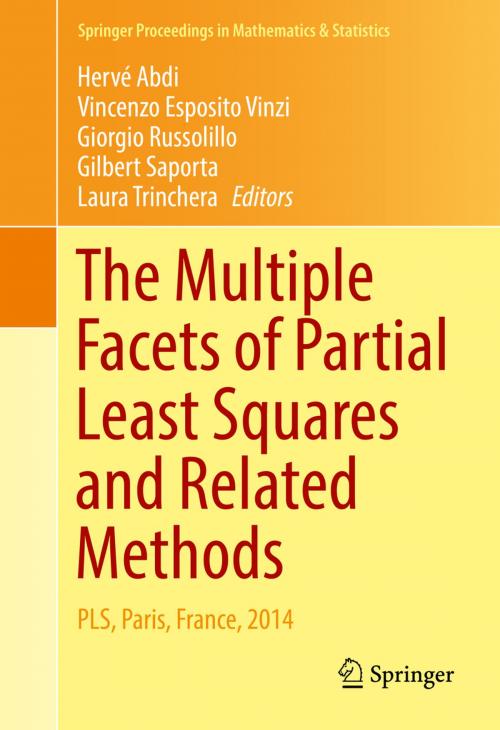The Multiple Facets of Partial Least Squares and Related Methods
PLS, Paris, France, 2014
Nonfiction, Science & Nature, Mathematics, Applied, Statistics| Author: | ISBN: | 9783319406435 | |
| Publisher: | Springer International Publishing | Publication: | October 13, 2016 |
| Imprint: | Springer | Language: | English |
| Author: | |
| ISBN: | 9783319406435 |
| Publisher: | Springer International Publishing |
| Publication: | October 13, 2016 |
| Imprint: | Springer |
| Language: | English |
This volume presents state of the art theories, new developments, and important applications of Partial Least Square (PLS) methods. The text begins with the invited communications of current leaders in the field who cover the history of PLS, an overview of methodological issues, and recent advances in regression and multi-block approaches. The rest of the volume comprises selected, reviewed contributions from the 8th International Conference on Partial Least Squares and Related Methods held in Paris, France, on 26-28 May, 2014. They are organized in four coherent sections: 1) new developments in genomics and brain imaging, 2) new and alternative methods for multi-table and path analysis, 3) advances in partial least square regression (PLSR), and 4) partial least square path modeling (PLS-PM) breakthroughs and applications. PLS methods are very versatile methods that are now used in areas as diverse as engineering, life science, sociology, psychology, brain imaging, genomics, and business among both academics and practitioners. The selected chapters here highlight this diversity with applied examples as well as the most recent advances.
This volume presents state of the art theories, new developments, and important applications of Partial Least Square (PLS) methods. The text begins with the invited communications of current leaders in the field who cover the history of PLS, an overview of methodological issues, and recent advances in regression and multi-block approaches. The rest of the volume comprises selected, reviewed contributions from the 8th International Conference on Partial Least Squares and Related Methods held in Paris, France, on 26-28 May, 2014. They are organized in four coherent sections: 1) new developments in genomics and brain imaging, 2) new and alternative methods for multi-table and path analysis, 3) advances in partial least square regression (PLSR), and 4) partial least square path modeling (PLS-PM) breakthroughs and applications. PLS methods are very versatile methods that are now used in areas as diverse as engineering, life science, sociology, psychology, brain imaging, genomics, and business among both academics and practitioners. The selected chapters here highlight this diversity with applied examples as well as the most recent advances.















